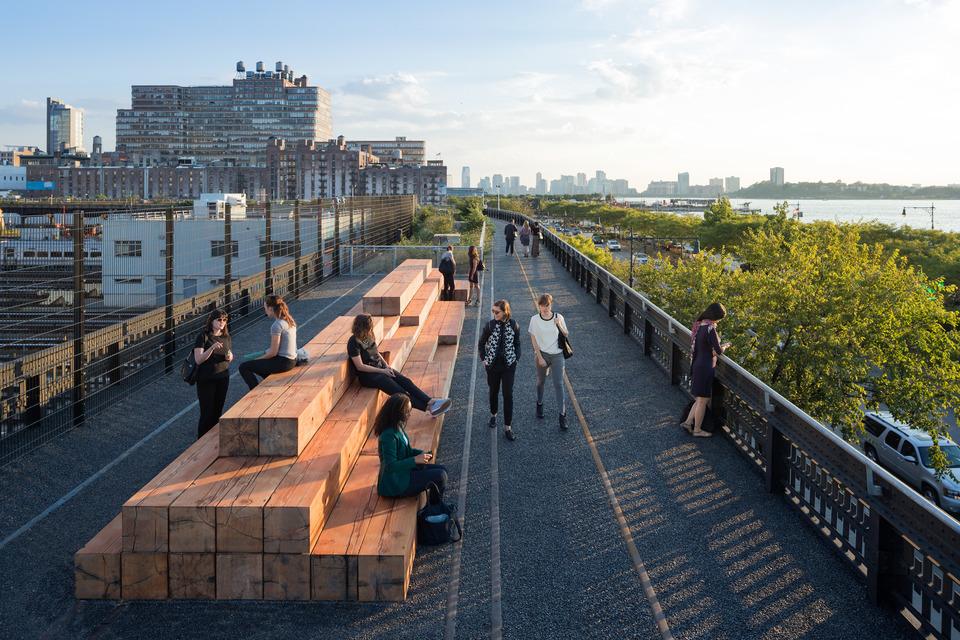NEW YORK—Somehow, outdoors at 30 feet above street level, everything is beautiful; even industrial traffic, mused Joshua David, co-founder of the beloved High Line, earlier this year while celebrating the park’s fifth anniversary.
On 17th Street, a downward-looking window gives park goers a glimpse of 10th Avenue traffic. It’s a scene one wouldn’t give a second glance from the sidewalk, but the elevated space seems to always have a spectator or two.
For visitors walking up and down the newly opened third section of the park—the Rail Yards—with the foggy view of the Hudson beside the rows and rows of Long Island Railroad trains, a block away from a bus parking lot, and overlooking massive construction of Far West Manhattan’s newest neighborhood, it was nothing short of serene.
“I never understood the point of it, until I saw it myself,” said Melissa Burch. “You’re elevated so you have a nice vista, but you’re close enough to the ground that you feel connected to the energy of New York.”
Sunday morning on the High Line, Burch watched her young son and daughter—ages five and three—run, arms out, over the rails embedded into the wooden planks of the park, excited to be on the Rail Yards of the park for the first time.
The sound of a train whistle carried over the park as Burch followed her children, taking photos of them with her iPhone, explaining to her son that the park used to be a place where trains ran.
Park hopping is a family hobby, Burch explained, and the High Line has become their favorite spot. The children have been coming since the very beginning, and now about once a month.
“It’s one of those things that it’s hard to imagine how special it really is, until you come to experience it for yourself,” Burch said.






